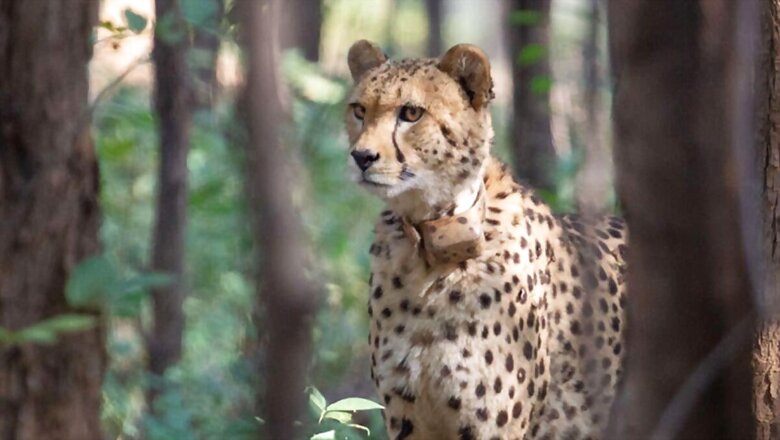
views
Only five to seven cheetahs may survive from the founder population of 20 felines in Kuno National Park before recovery begins, according to international experts associated with Project Cheetah. With a quarter of the population already lost, more deaths are anticipated before the end of the year.
In the first such assessment of one of the world’s biggest wildlife translocations, conservationists say the mortality so far has been “within the normal parameters” for wild cheetahs.
When South Africa began cheetah re-introductions in 1966, it took the country 26 years and the loss of 200 felines to establish best practices for the exercise.
Although such high losses are unlikely in India, Project Cheetah will undoubtedly undergo similar growing pains, according to the South African experts who are also on the consulting panel of the government’s Cheetah Project Steering Committee.
South Africa and Namibia together hold 40% of the global cheetah population. WIth the animal in perpetual decline globally, South Africa started reintroducing them within and outside the country to conserve the vulnerable species. It has been able to halt its further decline, with their meta-population now growing by 8% every year — addition of 40-60 cats.
India has so far translocated 20 cheetahs from the two countries to Madhya Pradesh since September 2022 and only 14 of them along with a lone cub have survived. The government’s Cheetah Action Plan has already factored in the loss of 50% of the founder population in the first-year post-release—a standard for wild cheetah reintroductions into unfenced systems.
‘CUBS WITH REAL CHANCES OF SURVIVAL TO BE BORN IN 2024’
A year since its launch, the government’s ambitious wildlife experiment has already hit unforeseen challenges. Four South African and two Namibian cheetahs died in the last six months. Three of four cubs born to a Namibian cheetah perished due to heatstroke in May, leaving only one cub– India’s only native-born cheetah, the first in almost 70 years.
According to the expert group, the first litters with realistic prospects of survival to adulthood are likely to be born in 2024.
The conservationists have now pinned hopes on one of the female cheetahs which has the potential to be a ‘super mom’ and raise more than ten cubs in her lifetime.
However, it may take a long time for the reintroduced female cheetahs to adapt to the opposite nature of the seasons in India before they set their birthing intervals through trial and error—losing a high number of cubs initially.
‘PREPARE TWO MORE SITES BY END OF 2024’
The expert group has suggested that at least 50 more founder cheetahs from South Africa would be required over the next decade before the Indian population stabilises.
They have also strongly recommended that Indian authorities should move swiftly to identify alternative sites for reintroduction. With Kuno National Park as a sink reserve, at least two additional reintroduction sites must become available to Project Cheetah by the end of 2024 in order to have realistic prospects of population growth in India. “Project Cheetah should not put all its eggs in one basket,” the team suggested.
There has never been a successful cheetah reintroduction into an unfenced system so far. Therefore, the fenced areas of Gandhi Sagar Wildlife Sanctuary and Mukundara Hills National Park are being considered favourable.
DAUNTING CHALLENGES, SMALL WINS
Contrasting seasonal cycles have proved to be the biggest adaptation challenge, according to the analysis. There was a severe blow to the project when three animals died due to septicaemia last month. According to experts, this was due to the thick skin (winter coat) that African cats develop in April/May anticipating winter, which rendered them susceptible to skin infections in India’s hot and humid monsoon season.
While the animals have been treated, the experts highlighted that these treatments may need to be repeated before the monsoon season next year to reduce parasite loads until they acquire sufficient immunity in time. If there is a genetic link to the development of winter coats, then adaptations required to deal with this issue will only be accrued on an evolutionary timescale, as per the assessment.
So far, all the cheetahs have been mostly hunting on their own, except on very few occasions when some of them had to be fed supplementarily.
The high leopard density in Kuno National Park has not impacted the cheetah reintroduction so far. Neither has there been any aggression from neighbouring communities, nor any wire snares or gin traps, the experts say.
















Comments
0 comment